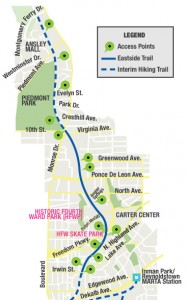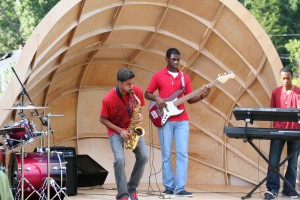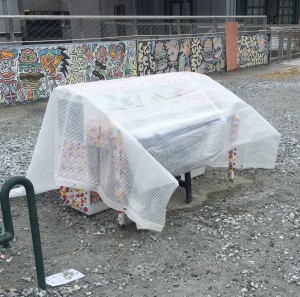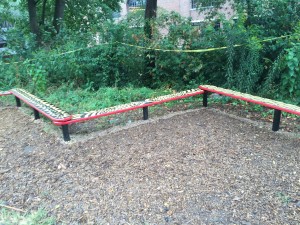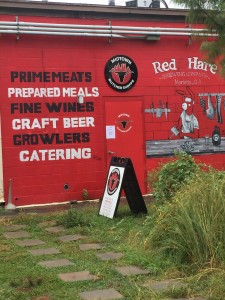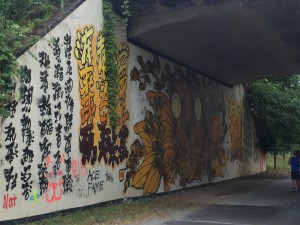A couple of weeks ago, I took my second walk along the Beltline, this time, joined by my classmates, two professors (Joe and Brennan), and several guests along the way (author Hannah Plamer and Beltline originator Ryan Gravel). This walk took place during late morning and early afternoon on a Thursday, as opposed to the first visit, which happened on a Sunday evening.
The weather distinguished this trip from the first strongest. The atmosphere boasted a brilliant sun and a delightful breeze, the kind of ideal mix of hot and cool that only the summer-to-fall transition can generate so perfectly. Though most potential visitors were probably working, the trail featured a much larger clientele than the rainy and dreary Sunday.
The breaths of runners still populated the air, but in greater magnitude, with the steps of each runner conglomerating into a background rhythm. Bells sang throughout the walk as bikers warned the flocks of walkers that they were passing them. The wonderful climatal torrent complimented the poems of Walt Whitman that we had read the prior night for American Literature exquisitely.
As my first description emphasized, art is everywhere on the Beltline. We walked through the part that I had visited before but also went to several areas that previously I had never seen. On one long length of fence hung a gallery of various photography projects. The subjects of these pictures spread across a vast diversity, from pictures of sports or refugees, and the rainbow of emotion: despair, joy, anger.
We observed several other benches similar to one that I wrote about before, except that these benches related only because they too are art, yet they display wildly different concepts. One was constructed of wood and round stone, like a sofa for the Flintstones. Another doubled as a musical instrument.
Even though the Beltline features similar amenities throughout its course, it manages to feel wildly different. As you walk, you will still see odd benches and different-sized sculptures, and so on, but they all feel so distinct that you barely realize that fact until you write a report on it afterward.
